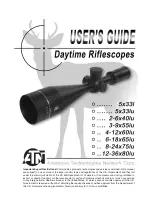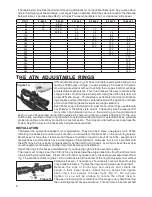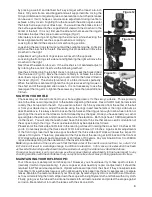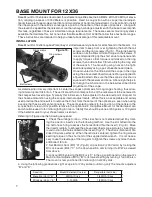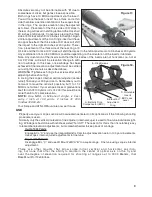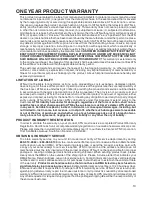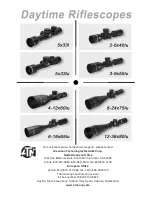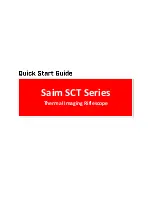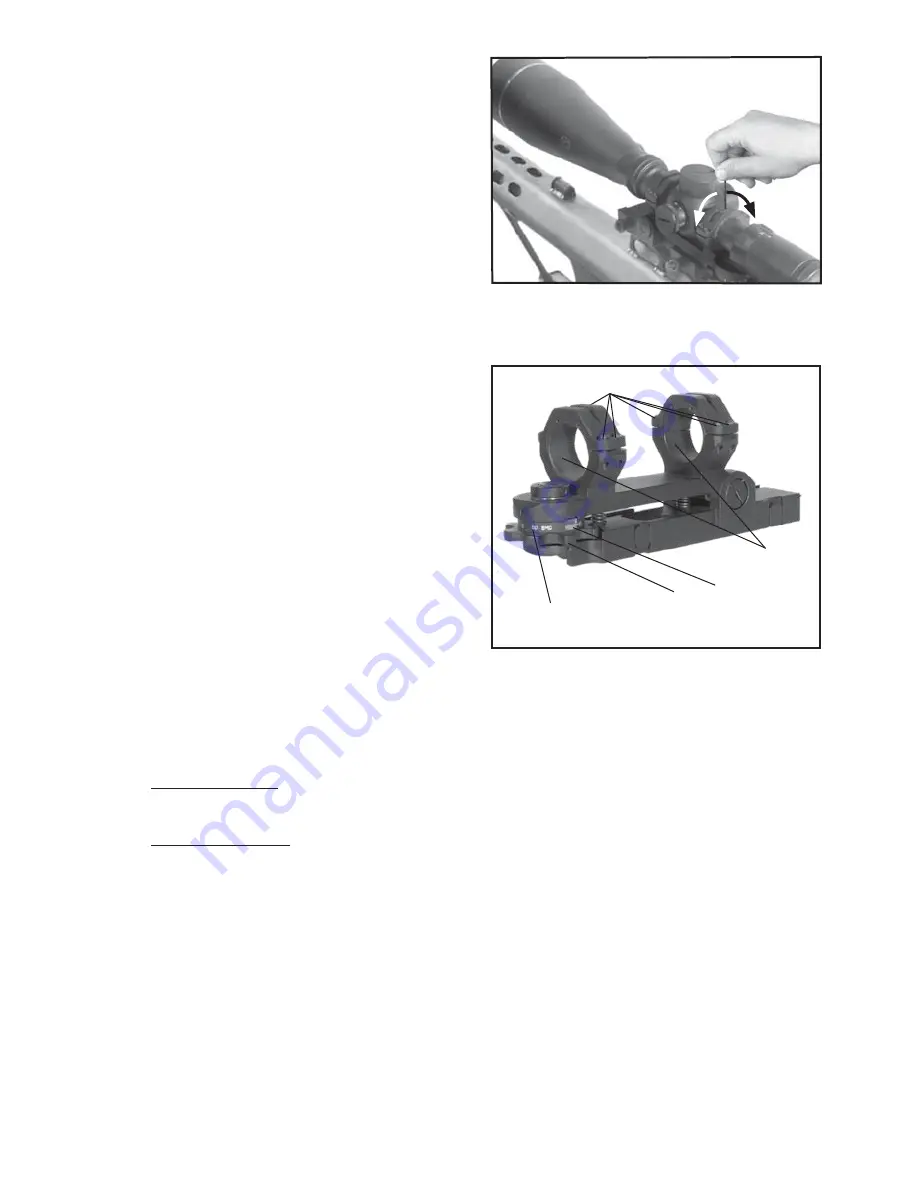
8
Absolute zero may not be attainable with “B” due to
coarseness of clicks, but get as close as possible.
Both rings have 10 MOA adjustment via the insert.
You will note that each insert has a thick and a thin
side that allow a centric orientation of the scopes body
in the rings. The scope’s elevation may be adjusted
as follows: Placement of the thick side at 3 O’clock in
therear ring will result in shifting leftward the crosshair
20 inches at 200 yards. Conversely placing the thick
side at 9 O’clock will shift it 20 inches to the right. Again
similar adjustments of the front ring’s insert will have
an opposite effect; the thick side at 3 O’clock will shift
the impact to the right 20 inches at 200 yards. There-
fore, placement of the thick side of the rear ring at 3
O’clock and the front’s at 9 O’clock will shift the impact to the left a maximum of 40 inches at 200 yards.
Any combination from 0 to 20 MOA is possible depending on the orientation of the inserts in tandem.
Note: Any orientation of the inserts such that the thick sides of the inserts are not horizontal, i.e., not at
3 or 9 O’clock, will result in a elevation change in addi-
tion to windage. In this case, once windage has been
achieved a final elevation adjustment must be carried
out using the side nuts as described above.
WARNING! Tighten each ring’s four screws after each
adjusting before shooting!
5. Using the scope’s internal vertical adjuster (center
turret) finalize your 200 yard zero. Remember you do
not want to move the reticle if possible, but 1 to 11/2
MOA is not critical. If your scope’s clicks or graduations
are 1/8 inch @ 100 yards (or ¼ @ 200) this would be no
more than 8 to 12 clicks elevation.
notE :
One MOA, or Minute of Angle, is basi-
cally 1 inc h at 10 0 yard s, 2 inc hes @ 20 0,
3 inches @ 300, etc.
Your Scope and ATN LR Mount are now set for use.
use
Properly used your scope’s reticle will now remain centered on its optical axis if the following shooting
procedure is used.
Normally only the vertical or elevation fine adjuster (internal scope) is used to fine-tune individual sight-
ing. Windage is best done with reticle assisted “hold off”. The reason for this is that it is relatively easy
to remember elevation adjustments, but somewhat harder to keep track of windage.
out to 1000 Yards
Engage BCL “C” and use the integral Ballistic Cam to adjust elevation zero in 100 yard increments.
Use scope’s internal (turret) adjustments to fine tune.
Beyond 1000 Yards
Disengage BCL “C” and use LR Mount’s MVA “B” to acquire range. Fine tune using scope’s internal
adjustment.
T h e r e a r e o t h e r m o u n t s t h at a l l ow s o m e i n i t i a l ve r t i c a l a n d h o r izo n t a l p o s i t i o n -
ing, but none that offer the ability to maintain the center of optical axis on the fly and
over the degree of elevation required for shooting at ranges out to 3000 Meters, that
Base Mount for 12x36 does.
Figure 17.
A. Ballistic Drop
Compensator (BDC)
B. Elevation
Adjustment
Ring
C. BDC Lock
Lever
D. Rotatable
Inserts
E. Ring Screws
Figure 18.

